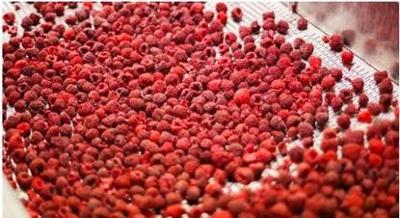We use processes in the food industry to enhance the quality and safety of processed foodstuffs. For these processes to be effective, they have to operate within critical limits. For example, temperature and pressure must be constantly monitored in the sterilisation and pasteurisation of foods. In freeze-drying, we prolong the shelf life of products such as fruits or instant coffee as well as to make them easier to transport and store, by withdrawing water. Again constant monitoring of temperature is required. This ensures that the measuring values required for the respective preservation process are adhered to and that the temperature is uniformly distributed in the corresponding systems. In order to ensure that the prescribed food safety targets are met, these processes must be validated and then regularly verified.
In order to fulfill these requirements, the food safety team generally relies on system solutions consisting of data loggers and software. However, these are often complicated to handle and susceptible to wear, making daily work more difficult than necessary.

There are a number of challenges you will need to overcome if you are setting up these process validation studies:
1. Positioning measurement technology in the plant
In order to ensure you have a complete picture of the thermal activity, you will need to position a number of temperature sensors. The correct set-up in an average freeze-drying plant as an example, with 40 measurement points can take several hours. The type of process and packaging plays an important role in the selection of the type of data logger. You also need to ensure that the data logger itself does not become a source of contamination.
2. Evaluation of the measurement values
Several hundred A4 pages of recorded measurement values are not unusual in this kind of measurement, representing a considerable challenge in terms of time for the staff member evaluating the measurement data. Since the measurement data have to be completely checked and prepared as tables and graphs, it is almost impossible to process them quickly using standard programs.

 3. Image documentation
3. Image documentation
For the purposes of qualifying a freeze-drying plant, the measurement set-up ideally should be documented with images. This is necessary in order to be able to reproduce the exact positioning of the temperature sensors during the measurement. In view of the fact that there are 40 or more measurement points, image documentation of this kind can sometimes be a matter of several hours.
4. Reporting
You will need to ensure you prepare a comprehensive report containing tables, graphs, information on measurement technology, image documentation, and much more. In order to present this collated information clearly in a report, several programs are often needed, which is very time-consuming for the processing staff member.
The solution
It is clear that this is an onerous process and the help of a consolidated technology platform will greatly assist. The testo 191 data logger system simplifies the monitoring and documentation of temperature and pressure in sterilization, pasteurization, and freeze-drying processes. It comprises a number of hygienically designed data loggers to suit your process, intuitively operated software, and one multifunction case. In the development of the testo 191 Professional software, special attention was paid to intuitive operation. The user is guided safely step by step through the qualification process and receives warnings at critical points. You can now know exactly what is happening in your process – to ensure safe food.
For more information, please contact us at info@testo.co.za






